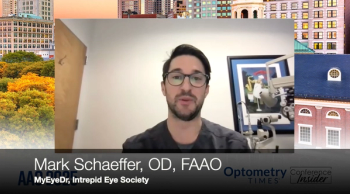
NIH announces definition of elements of brain-based visual impairment in children
Additional research is needed to establish best diagnostic and management strategies for increasingly common condition.
A press release from the NIH announced that its scientific team has defined elements of brain-based visual impairment in children. Cerebral or cortical visual impairment (CVI) “has emerged as a leading cause of vision impairment starting in childhood in the US and other industrialized nations,” according to the press release.
The NIH reported that a panel of experts convened by the NIH have identified 5 elements of CVI, and that some estimates have suggested “that at least 3% of primary school children exhibit CVI-related visual problems, which vary, but may include difficulty visually searching for an object or person or understanding a scene involving complex motion.”
The report, based on evidence and expert opinion, was published in Ophthalmology with an accompanying editorial.1,2
Lotfi B. Merabet, OD, PhD, stated, “Lack of awareness about CVI is a large factor leading to it being misdiagnosed or undiagnosed, which can mean years of frustration for children and parents who are unaware of an underlying vision issue and don’t receive help for it.” He is the report co-author and associate professor of ophthalmology, Massachusetts Eye and Ear and Harvard Medical School, Boston.
5 elements identified
These include brain involvement, visual dysfunction greater than expected based on eye exam, types of visual deficits, distinguishing overlapping neurological disorders, and the fact that CVI is easily missed.
Melinda Y. Chang, MD, commented, “Clarifying the factors for suspecting CVI should help build awareness and help eye care providers identify children for further assessment so they can benefit from rehabilitation and accommodation strategies as early as possible.” She is co-author and assistant professor of clinical ophthalmology, University of Southern California, Los Angeles.
The NEI is overseeing the development of a registry to amass data from people with CVI. This database will be available for researchers to study the spectrum of CVI’s signs and symptoms and to define best diagnostic and rehabilitative practices. More information is available online at the
The press release also reported that CVI definition report is based on a workshop hosted by the NEI in partnership with the Eunice Kennedy Shriver National Institute of Child Health and Human Development and the National Institute of Neurological Disorders and Stroke. A complementary report from the American Academy of Pediatrics to help pediatricians recognize CVI was published in Pediatrics.3
“Significant work remains to be done to optimize diagnostic approaches and multidisciplinary rehabilitation strategies to improve quality of life for people with CVI, which is why it is a priority in our strategic plan,” said Michael F. Chiang, MD, director of the NEI.
References:
Chang MY, Merabet LB; CVI Working Group. Special Commentary: Cerebral/Cortical Visual Impairment (CVI) Working Definition: A report from the National Institutes of Health CVI Workshop. Ophthalmology 2024;131:1359-1365.
https://www.aaojournal.org/article/S0161-6420(24)00565-7/fulltext(link is external) Gordon S, Kerr A, Wiggs C, et al. Editorial: What is Cerebral/Cortical Visual Impairment and Why Do We Need a New Definition? Ophthalmology 2024;131:1357-1358.
https://www.aaojournal.org/article/S0161-6420(24)00559-1/fulltext(link is external) Lehman SS, Yin L, Chang MY; American Academy of Pediatrics, Section on Ophthalmology, Council on Children With Disabilities; American Association for Pediatric Ophthalmology and Strabismus; American Academy of Ophthalmology; American Association of Certified Orthoptists. Diagnosis and care of children with cerebral/cortical visual impairment: Clinical report. Pediatrics. 2024;154(6):e2024068465. DOI:
https://doi.org/10.1542/peds.2024-068465(link is external)
Newsletter
Want more insights like this? Subscribe to Optometry Times and get clinical pearls and practice tips delivered straight to your inbox.



















































.png)


